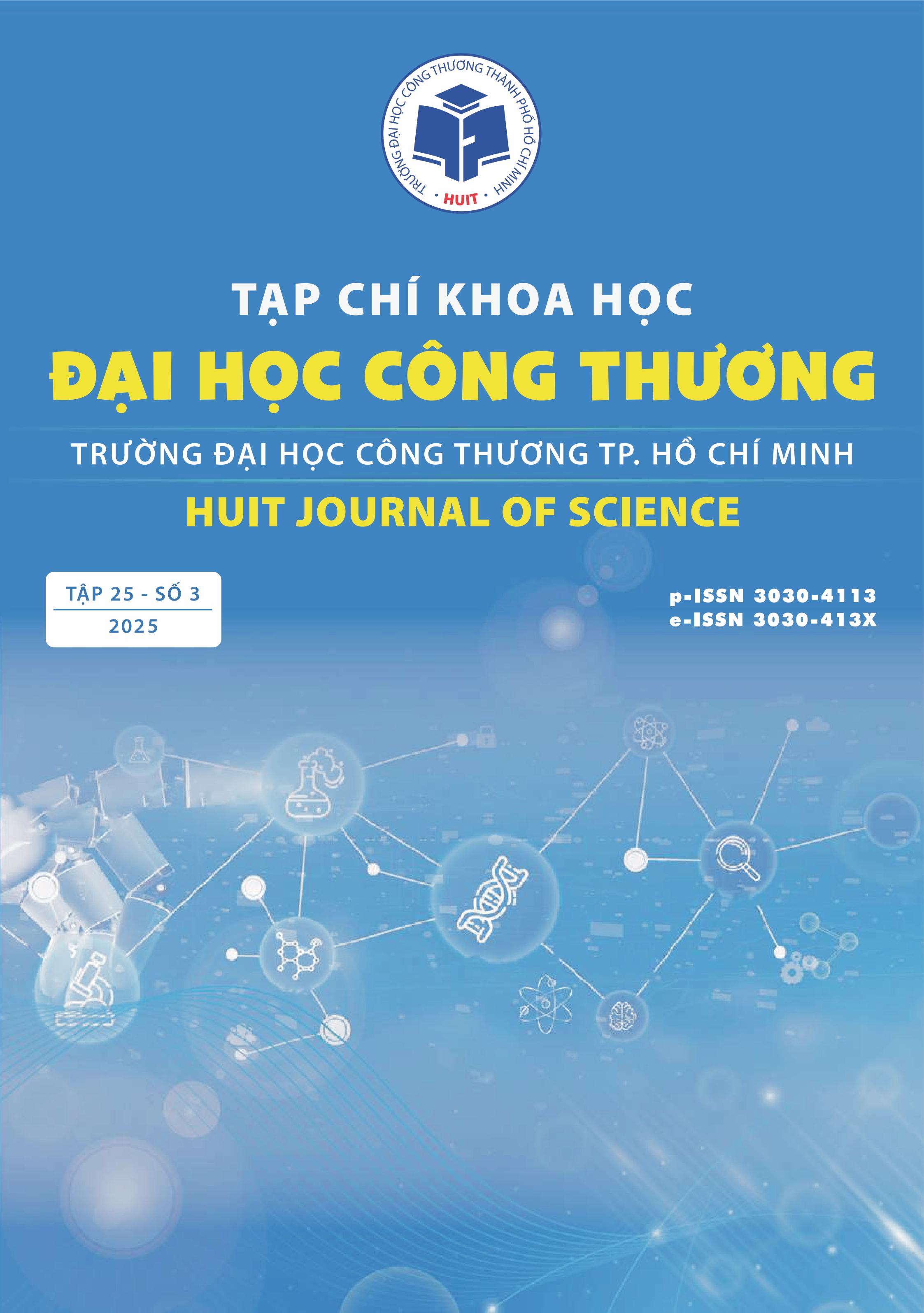Issue
Date Log
Copyright (c) 2025 HUIT Journal of Science

This work is licensed under a Creative Commons Attribution 4.0 International License.
EXTRACTION AND SPRAY-DRYING CHLOROPHYLL FROM Chaetomorpha aerea ALGAE
Corresponding Author(s) : Hoang Thi Ngoc Nhon
HUIT Journal of Science,
Vol. 25 No. 3 (2025)
Abstract
Chaetomorpha aerea is a filamentous green alga commonly found in saline and brackish aquaculture environments, where its excessive proliferation poses ecological concerns and operational challenges. Utilizing this abundant biomass for chlorophyll extraction offers a sustainable biorefinery approach, mitigating environmental impacts while enabling the recovery of high-value bioactive compounds, as the species contains notably high chlorophyll content. Chlorophyll, a natural pigment essential for photosynthesis, is widely applied as a functional additive in food and cosmetic products due to its antioxidant, antibacterial, antifungal, hepatoprotective, anticancer, and immunomodulatory properties. This study investigated the effects of MgCO₃ concentration, microwave power, and extraction time on chlorophyll extraction from C. aerea using microwave-assisted extraction (MAE). A Box-Behnken design was applied to optimize the conditions, which were determined to be 0.8% MgCO₃, 360 W, and 240 s, yielding 50.831 µg/mL of chlorophyll - closely aligned with model predictions. The extract was concentrated under vacuum at 48 °C to 12% total solids, mixed with maltodextrin (25%), and spray-dried at 160°C with a feed rate of 8 mL/min. The final powder exhibited a green color, 3.37% moisture, good water solubility, and a recovery yield of 72.98%. Compared to previous studies, MAE increased chlorophyll yield by approximately 1.5 times, while spray-drying nearly doubled recovery efficiency, highlighting the effectiveness of this integrated extraction and stabilization strategy.
Keywords
Download Citation
Endnote/Zotero/Mendeley (RIS)BibTeX
